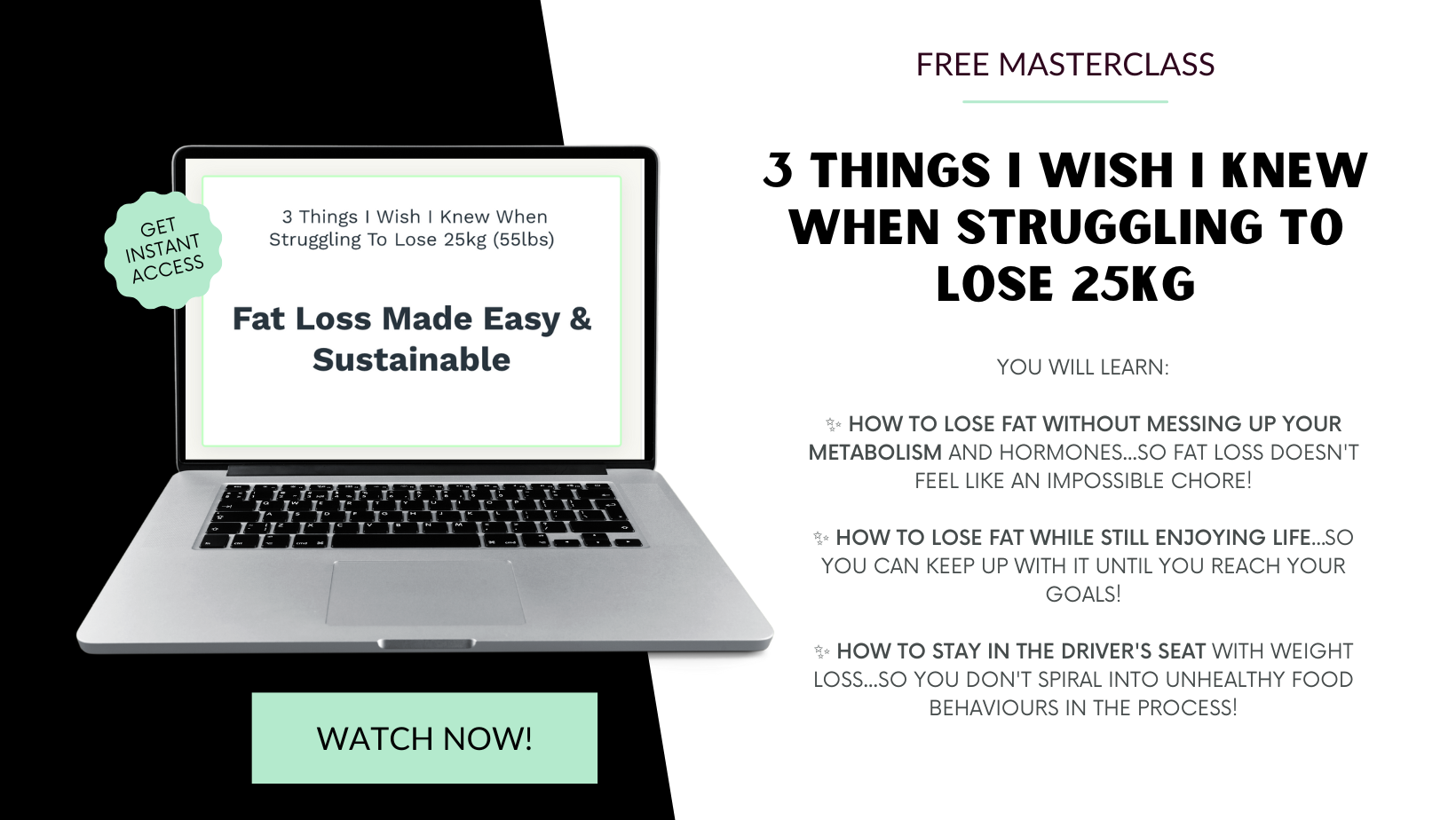What Is The Energy Balance Equation?
Jun 07, 2022
In this article we’re going to jump into the foundations of fat loss. I’ll teach you about the energy balance and what levers you can push and pull to induce weight loss gently.
So the energy balance equation - it is really the starting point of understanding how your body loses, gains and maintains weight.
Living beings continuously expend energy to sustain vital life functions and, when food is available, they consume energy from fat, carbohydrate, and protein. The difference between energy intake and energy expenditure determines whether, over time, body weight increases, decreases, or remains constant. This is why understanding energy processes is very important in weight management.
The relationship between energy in and energy out is referred to as the energy balance equation and is expressed as:
Energy Storage = Energy In - Energy Out
A person whose weight is stable successfully balances energy intake and expenditure. Weight loss occurs when expenditure exceeds intake or, put another way, when intake is less than expenditure. Weight gain occurs when intake exceeds expenditure or when expenditure is less than intake.
So the energy in is your food consumed.
ENERGY OUT
The energy out (aka total energy expenditure) is made up of a few components:
- Basal or resting metabolic rate (BMR or RMR) - which is the number of calories you burn each day at rest, just to breathe, think, and live. This represents roughly 60 percent of your ‘energy out’ and depends on weight, body composition, sex, age, genetic predisposition, and possibly the bacterial population of your gut. A bigger body, in general, has a higher RMR.
- Thermic Effect of food (TEF). This may surprise you, but it takes energy to digest food. Digestion is an active metabolic process. (Ever had the “meat sweats” or felt hot after a big meal, especially one with lots of protein? That’s TEF.) TEF is the number of calories you burn by eating, digesting, and processing your food.
This represents roughly 5-10 percent of your ‘energy out’. In general, you’ll burn more calories in your effort to digest and absorb protein (20-30 percent of its calories) and carbs (5-6 percent) than you do fats (3 percent). And as noted before, you’ll burn more calories digesting minimally processed whole foods compared to highly processed foods.
- Physical Activity (PA) PA is the calories you burn from purposeful exercise, such as walking, running, going to the gym, gardening, riding a bike, etc. Obviously, how much energy you expend through PA will change depending on how much you intentionally move around.
- Non-exercise Activity Thermogenesis (NEAT) - NEAT is the calories you burn through fidgeting, staying upright, and all other physical activities except purposeful exercise. This, too, varies from person to person and day to day.
So Energy out = BMR + TEF + PA + NEAT
Each of these is highly variable. Which means the ‘energy out’ side of the equation may be just as hard to pin down as the “energy in” side.
PA and NEAT accounts for the most of the variability in 'Energy out' and has the greatest potential for increasing energy expenditure.
The energy balance equation suggests that a decrease in food intake and/or an increase in any or all components of energy expenditure to equal 3,500 kcal will result in a loss of 1 pound. Conversely, an increase in food intake and/or a decrease in energy expenditure to equal 3,500 kcal will yield a gain of 1 pound.
This conclusion is logical but overly simplistic.
Energy metabolism is neither so predictable nor consistent from person to person. The billion-dollar diet book industry is based on the assumption that energy in is the main culprit in weight gain: If overweight people could only be convinced to reduce their intake or to eat certain foods, then excess pounds would disappear.
In fact, the often-overlooked aspect of energy out bears much responsibility for weight gain and regain, too.
To learn more about both sides of the energy balance and the relationship between energy in and energy out - take a look at Sustainable Fat Loss.
In that course, we'll also talk about metabolism damage, using periodisation to help make weight loss feel SO much easier, and how to know how much food you should be eating to lose weight that’s at a sustainable, healthy rate for YOUR body.
Start your food and body healing journey with the FREE masterclass
"Why You're Still Binge-Eating & How To Stop"


